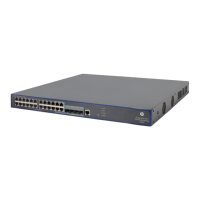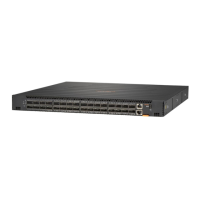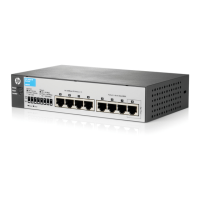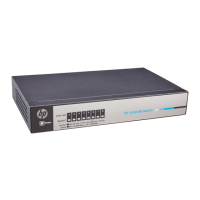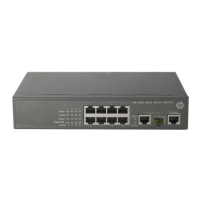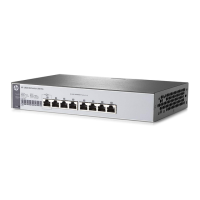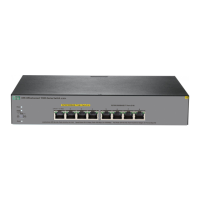157
• Static entries—Manually added and never age out.
• Dynamic entries—Manually added or dynamically learned, and might age out.
• Blackhole entries—Manually configured and never age out. They are configured for filtering out
frames with specific destination MAC addresses. For example, to block all packets destined for a
specific user for security concerns, you can configure the MAC address of this user as a blackhole
MAC address entry.
A static or blackhole MAC address entry can overwrite a dynamic MAC address entry, but not vice
versa.
Manually configured static MAC address entries have higher priority than automatically learned ones. If
a packet with such a source MAC address enters the switch on a different port from that in the static MAC
address entry, it is dropped.
Manually configured dynamic MAC address entries have the same priority as automatically learned
ones. If a packet with such a source MAC address enters the switch on a different port from that in the
dynamic MAC address entry, the system will learn a new MAC address entry and use the learned entry
to overwrite the manually configured dynamic entry.
When you configure a dynamic MAC address entry, if an automatically learned MAC address entry with
the same MAC address but a different outgoing port already exists, the manually configured one does
not take effect.
To adapt to network changes and prevent inactive entries from occupying table space, an aging
mechanism is adopted for dynamic MAC address entries. Each time a dynamic MAC address entry is
learned or created, an aging timer starts. If the entry has not updated when the aging timer expires, the
device deletes the entry. If the entry has updated before the aging timer expires, the aging timer restarts.
MAC address table-based frame forwarding
When forwarding a frame, the device adopts the following forwarding modes based on the MAC
address table:
• Unicast mode—If an entry is available for the destination MAC address, the device forwards the
frame out of the outgoing port indicated by the MAC address entry.
• Broadcast mode—If the device receives a frame with all Fs as the destination address, or no entry
is available for the destination MAC address, the device floods the frame to all the interfaces except
the receiving interface.
Displaying and configuring MAC address entries
1. Select Network > MAC from the navigation tree.
The system automatically displays the MAC tab, which shows all the MAC address entries on the
device.
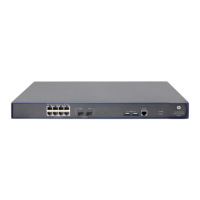
